
Nothing announces the arrival of summer better than the first bite into a sun-warmed strawberry. This berry is a summertime staple, from strawberry shortcake to home-canned strawberry jam. Heck, there are entire festivals dedicated to strawberries.
But before you can enjoy those treats, you’ll need to grow strawberries first. Let’s face it; these ruby-red beauties can be as problematic as tomatoes.
Let’s take a look at some of the most common strawberry-growing problems.
In theory, strawberries aren’t hard to grow.
But sometimes, it doesn’t feel that way when you head out to your strawberry patch and come up empty-handed. Because they grow close to the ground, they’re easily impacted by soil-borne diseases. Fluctuating spring temperatures and weather can also complicate matters. And unfortunately, we aren’t the only critters that enjoy nibbling on the sweet, red berries.
But as they say, knowing is half the battle, and when you know what trouble looks like before it gets here, you can usually nip it in the strawberry bud.
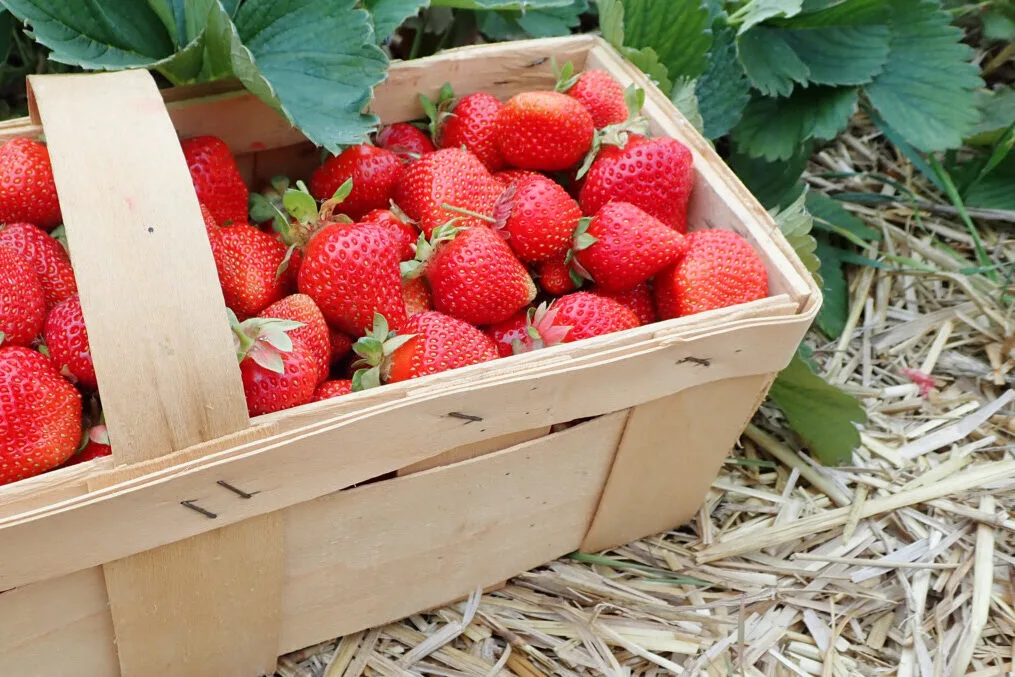
The Berry Basics
In this article, we’re fixing strawberry problems, so I will assume you know the basics of starting and growing a strawberry patch. However, you might want to check out these seven secrets for growing strawberries by the basketful each year.
We’ll do a little recap on growing strawberries before we jump in.
Strawberries are a perennial plant in the family Rosaceae. As we all know, they produce clusters of sweet red berries with seeds on the outside. The plant grows from a central crown which puts out runners to create new plants. The white flowers grow into beautiful, shiny red berries.
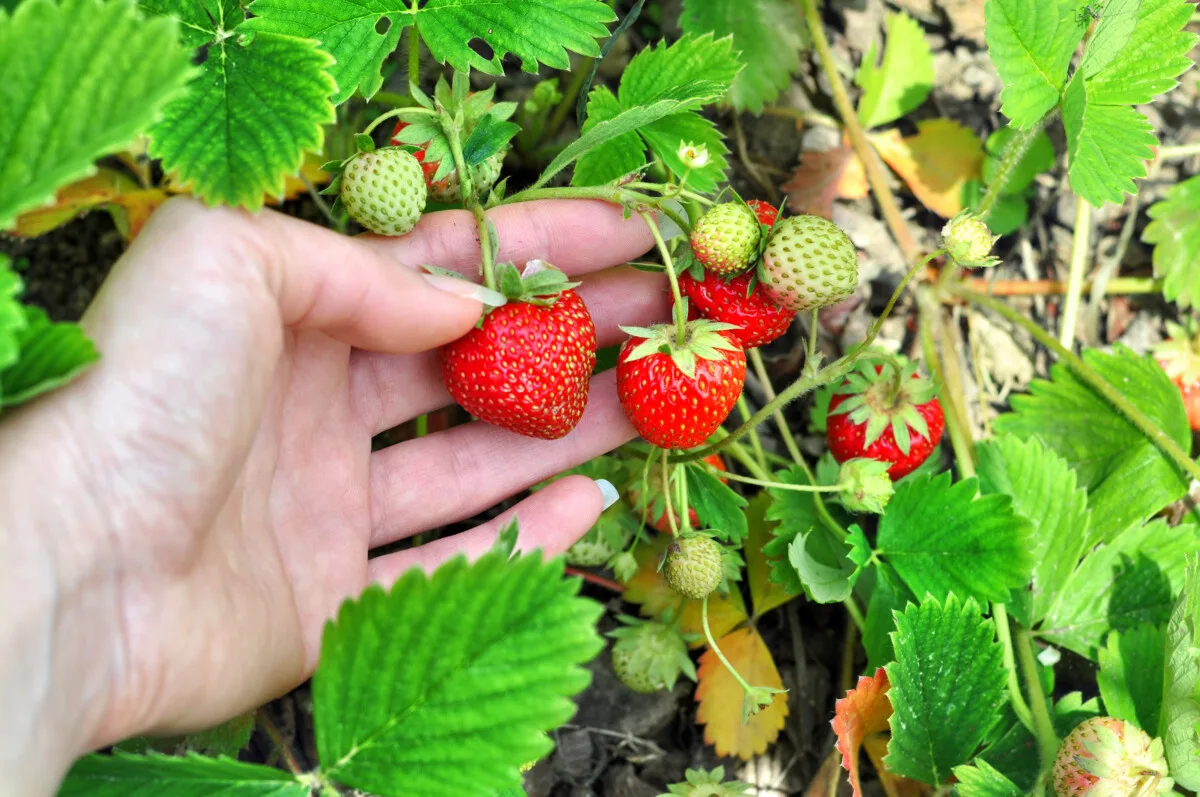
Strawberries are grouped by variety based on when they produce berries.
- June-bearing – these produce the largest fruits in a singular fruiting that only lasts for a few weeks in June.
- Everbearing – produce smaller berries, with two crops; one in early summer and a second in the fall.
- Day-neutral – these varieties will consistently produce small fruits, starting as soon as the temperatures are warm enough and will keep producing all summer until the first frost.
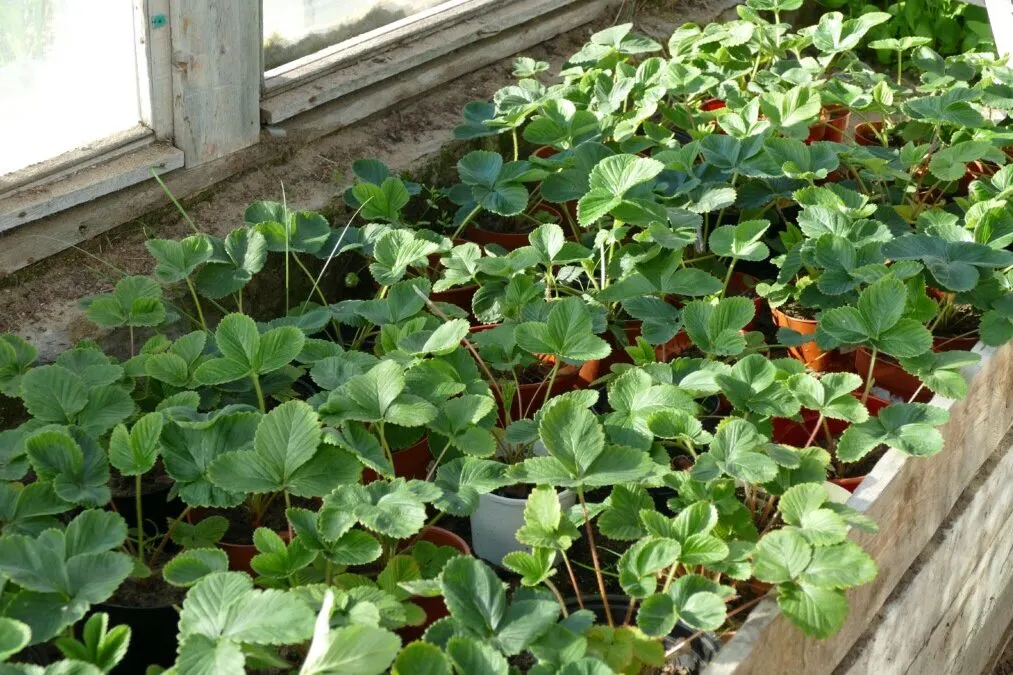
Strawberry plants need full sun and plenty of water, but they don’t like soggy soil or being watered on their crown. They will grow in practically any soil available, but they do best in – surprise, surprise – rich, well-draining loamy soil.
Fertilize them in the spring before they flower and then again in the fall.
While strawberries are a perennial, each plant will produce fewer berries over time and will need to be replaced. The great thing about strawberries is that once you start a patch, you can keep it going and make it bigger using the runners it produces each season.
On to the strawberry problems!
1. Plants Aren’t Producing Berries
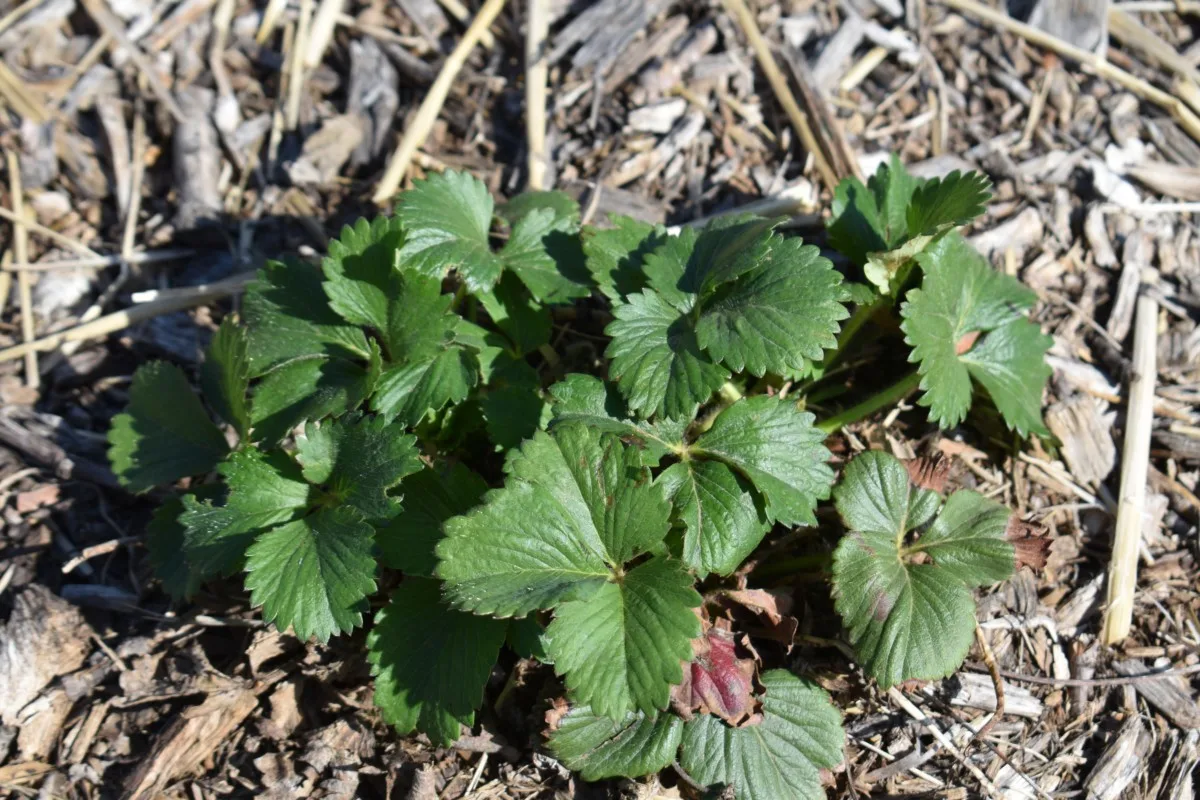
There are several reasons why strawberries will set out a nice crown full of emerald green leaves but few or no berries. Most of them are pretty easy to diagnose and fix.
New plants
You bought bare root strawberries or live plants this spring and tenderly planted them, giving them a nice helping of compost. You even fertilized them once they grew, and you didn’t forget to mulch. But here it is June, and you’re still staring at green leaves and a flower here and there. What gives?
New plants may not produce many berries in their first year. In fact, it’s advisable to pinch off flowers as they develop to encourage the plants to grow and become established. Don’t worry; your patience will be rewarded next season.
Wrong type
Another common scenario for new strawberry beds is not paying attention to the type of berries you’re planting. Check the label to see if you have June-bearers, ever-bearers or day-neutral types. If it’s June and you’re expecting a big harvest, but you’ve planted a day-neutral variety, you’ll get your berries spread out over the season rather than all in one go.
Frost Damaged Flowers
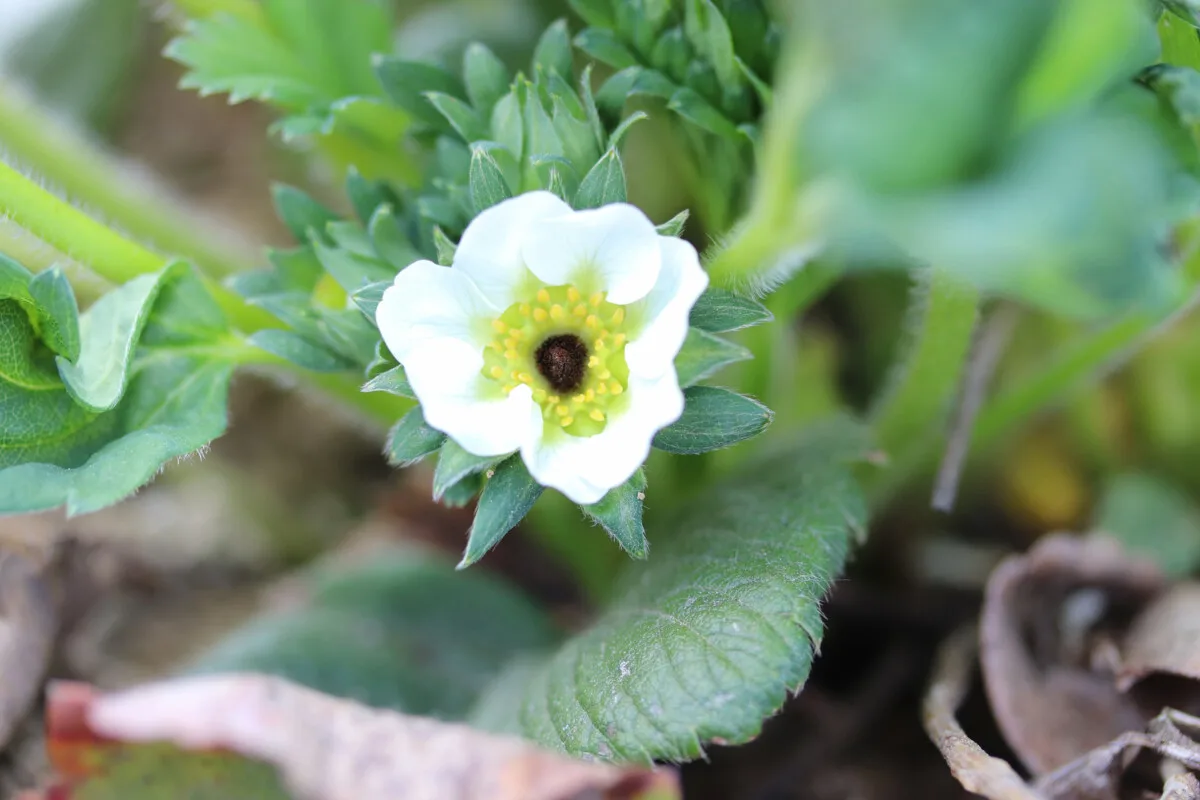
A late frost can damage strawberry flowers, making them unable to produce a berry. Often, the flower looks fine from afar, but if you look closer, you will see a black dot in the center. Unfortunately, everything needed to create a berry from that flower is now dead from the frost.
If you grow June bearers, you may be done for the season, depending on how bad the frost damage is. It’s always a good idea to consider growing several types of berries to ensure a good harvest.
2. Poor or Inadequate Soil Conditions
While strawberries can grow in poor soil, they won’t thrive. You’ll end up with stunted plants, nutrient deficiencies, and, worst of all – decreased berry production.
The first thing you need to do if you suspect your soil is less than ideal is to get your soil tested. Strawberries thrive in slightly acidic soil with a pH ranging from 5.5 to 6.5. If the pH is too high, amend the soil with elemental sulfur or a commercial soil acidifier. For alkaline soil, add lime to raise the pH.
Additionally, strawberries require well-drained soil to prevent root rot and other water-related issues; remember, they don’t like wet feet. If your soil retains too much water, adding compost or leaf mold will help to improve drainage.
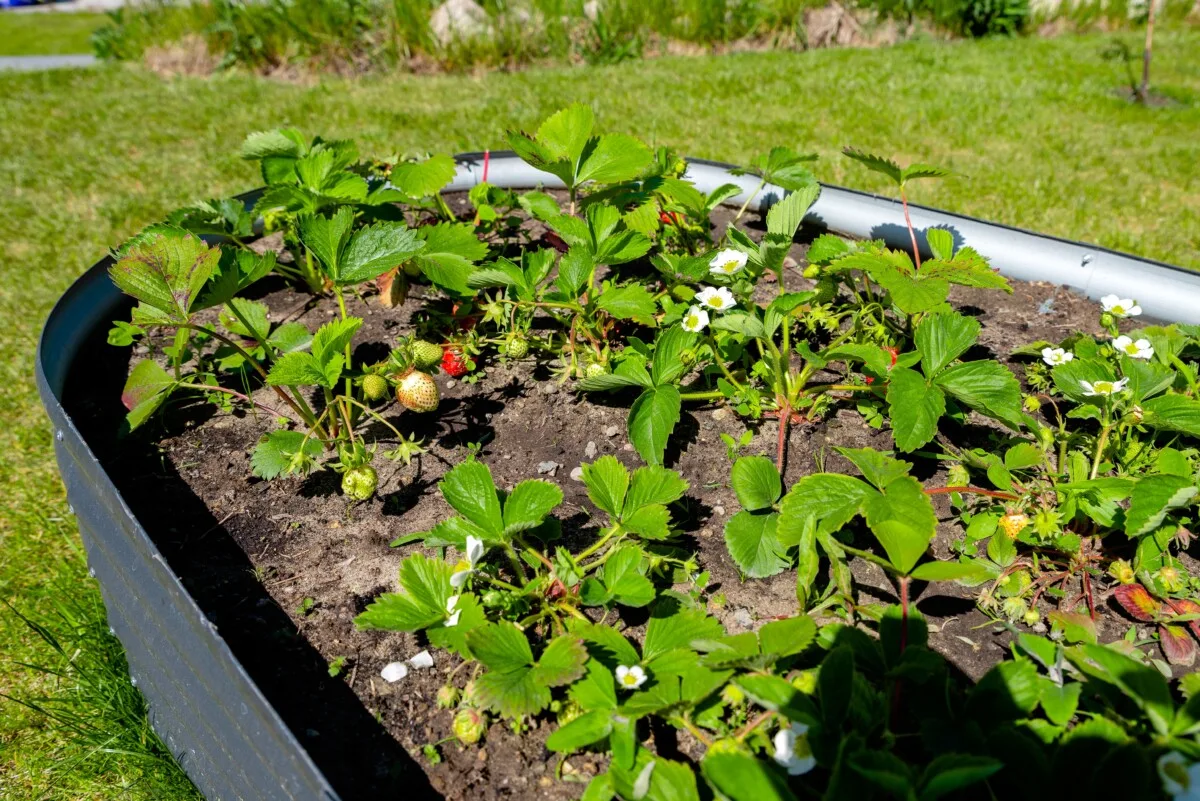
Of course, many strawberry fans choose to have dedicated raised beds just for their berries so they have total control over the soil.
3. Improper Watering
Inconsistent or improper watering can lead to several strawberry-growing problems. Overwatering can drown the roots, promoting fungal diseases, including the dreaded root rot. On the other hand, the plants need water to produce large, flavorful berries, and underwatering can result in wilting and little to no fruit.
Maintain moist but not waterlogged soil.
To water strawberries effectively, provide regular, deep watering, especially during hot and dry periods. It’s especially important to lay down mulch, such as straw, to retain moisture and prevent weed growth. This protective layer can also keep certain soil-borne diseases at bay.
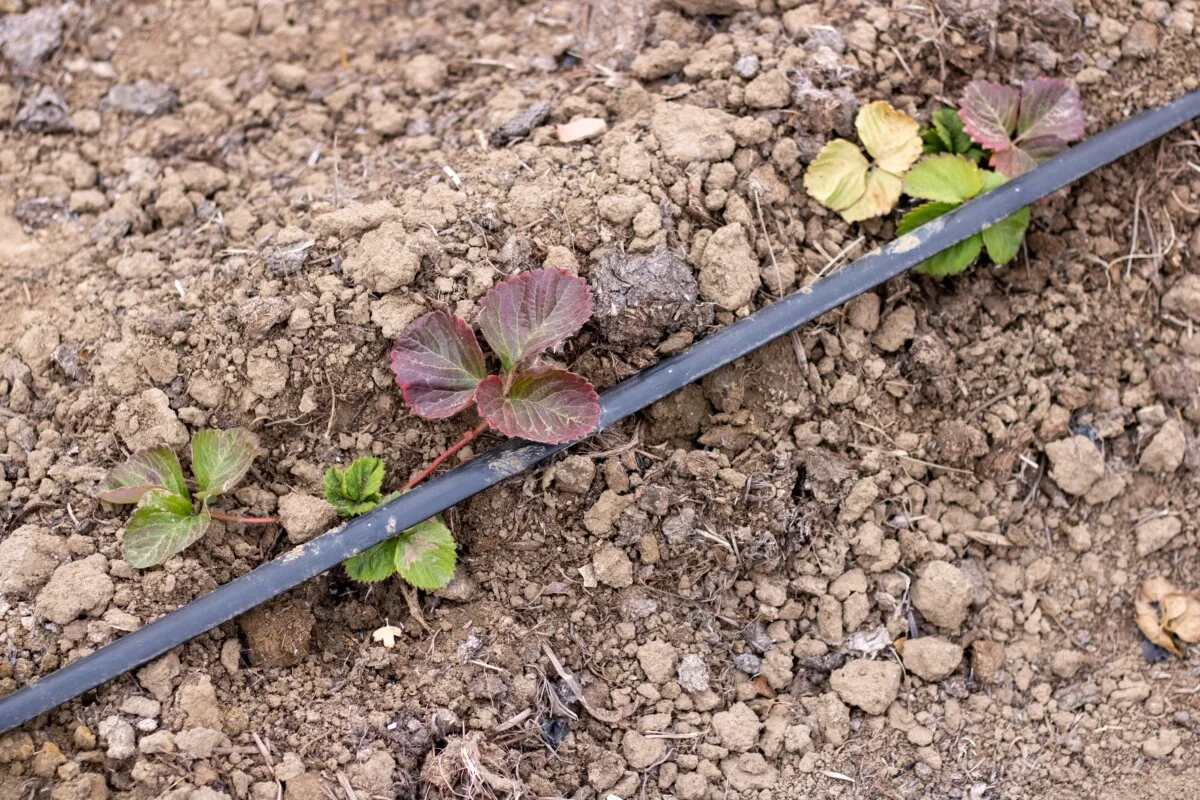
Drip irrigation systems are great for strawberries, as they deliver water directly to the plant’s root zone and avoid getting the plant’s crown wet. Don’t pour water directly on the crown if you’re watering by hand.
4. Pollination Problems
Strawberries have to be pollinated for fruit to set. So, if your plants aren’t producing, inadequate pollination could be the culprit. Factors like a lack of pollinators in your area, adverse weather conditions, or even growing strawberries indoors may hinder pollination.
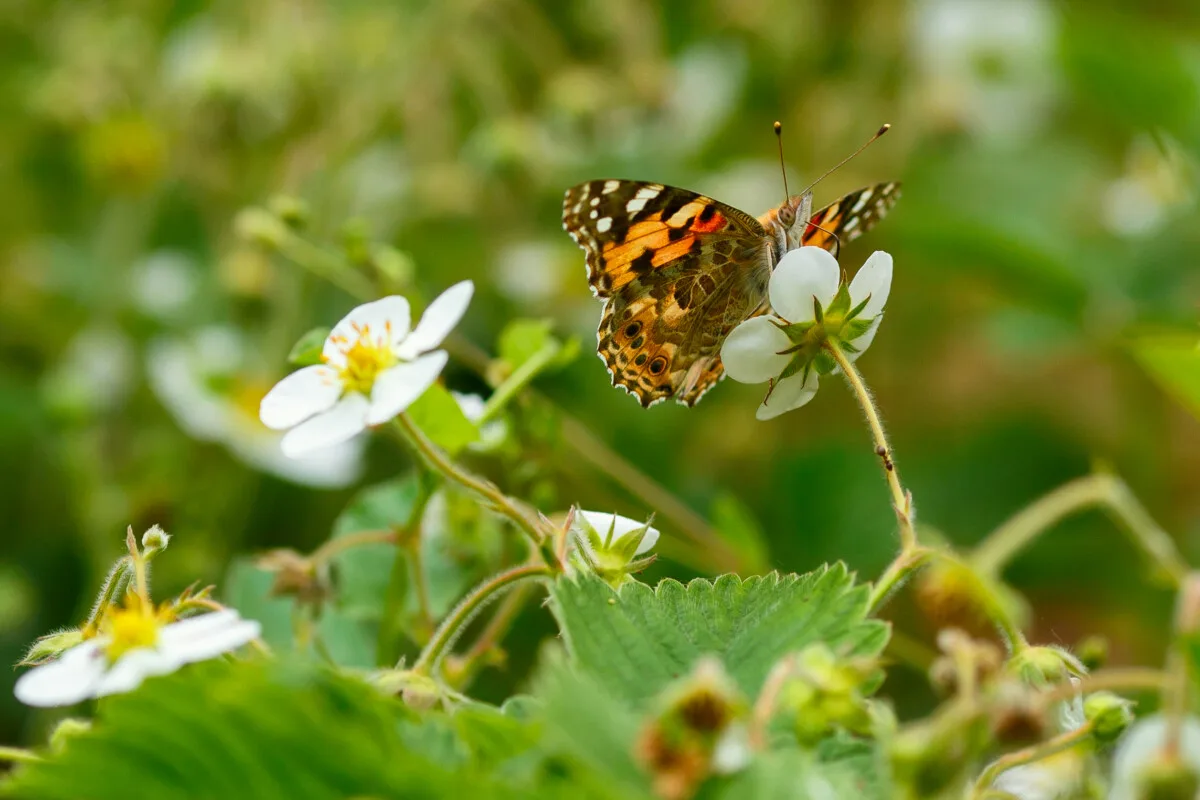
To encourage pollination, attract pollinators by planting flowers near your strawberry plants. It’s always a good idea to plant flowers in your garden. But be sure you choose flowers that will bloom at the same time as your strawberry blossoms.
If you’re a diehard strawberry lover, you can also hand-pollinate strawberries by gently transferring pollen from the stamen to the pistil using a small brush or cotton swab. Consider gently shaking the plants to release pollen, mimicking the wind’s natural action. This can be quite a challenge if you’ve got a large strawberry patch.
5. Pesky Strawberry Pests
Hungry pests can wreak havoc on your strawberry plants, affecting not only how big your harvest is but the flavor and size of the berries, too. To combat these little menaces, there are numerous organic pest control methods to deploy. Attract beneficial insects like ladybugs or lacewings. Or mix up a batch of insecticidal soap with liquid dish soap and a bit of neem oil.
It’s always a good idea to inspect your plants regularly. Spotting a pest before it becomes a full-blown infestation makes dealing with them easier.
Aphids
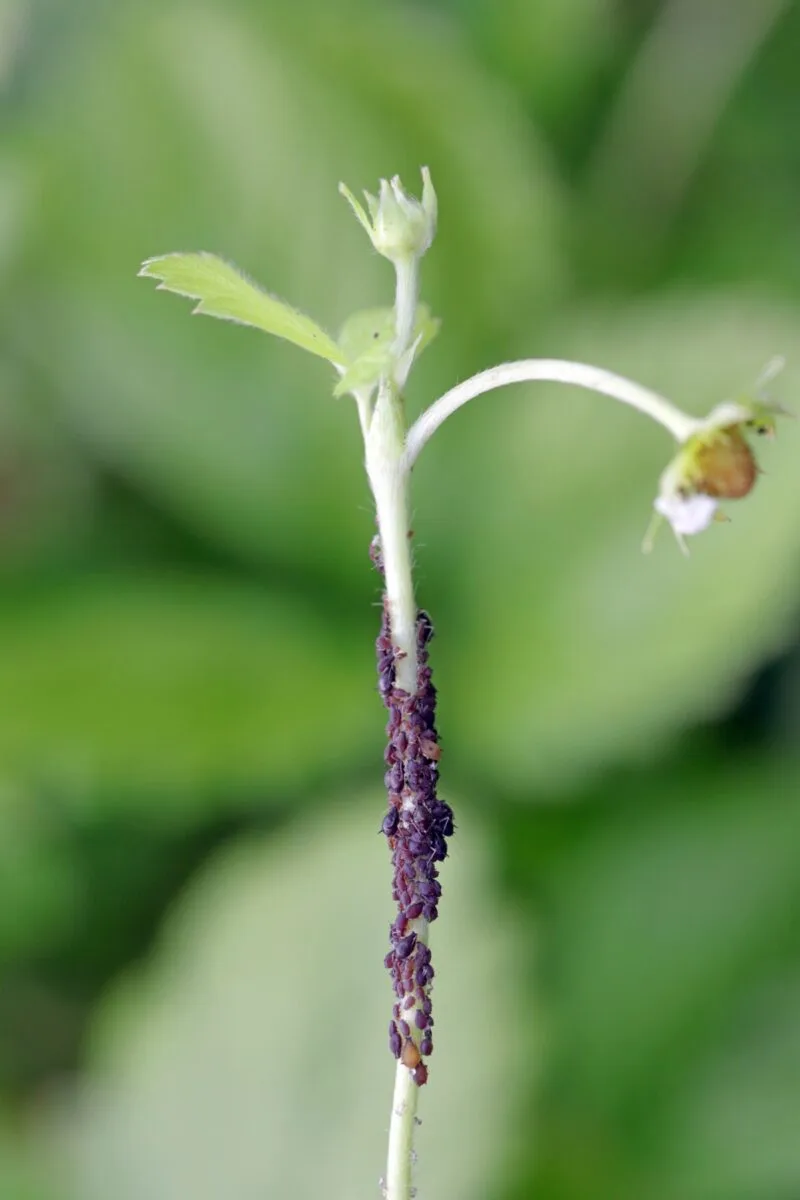
Aphids are tiny, soft-bodied insects that suck sap from strawberry plants, causing stunted growth and deformed leaves. To control aphids, you can use insecticidal soap or a strong jet of water to wash them off the plants. Introducing natural predators like ladybugs or lacewings can also help control aphid populations. Check out Lindsay’s article on how to deal with aphids.
Slugs and Snails
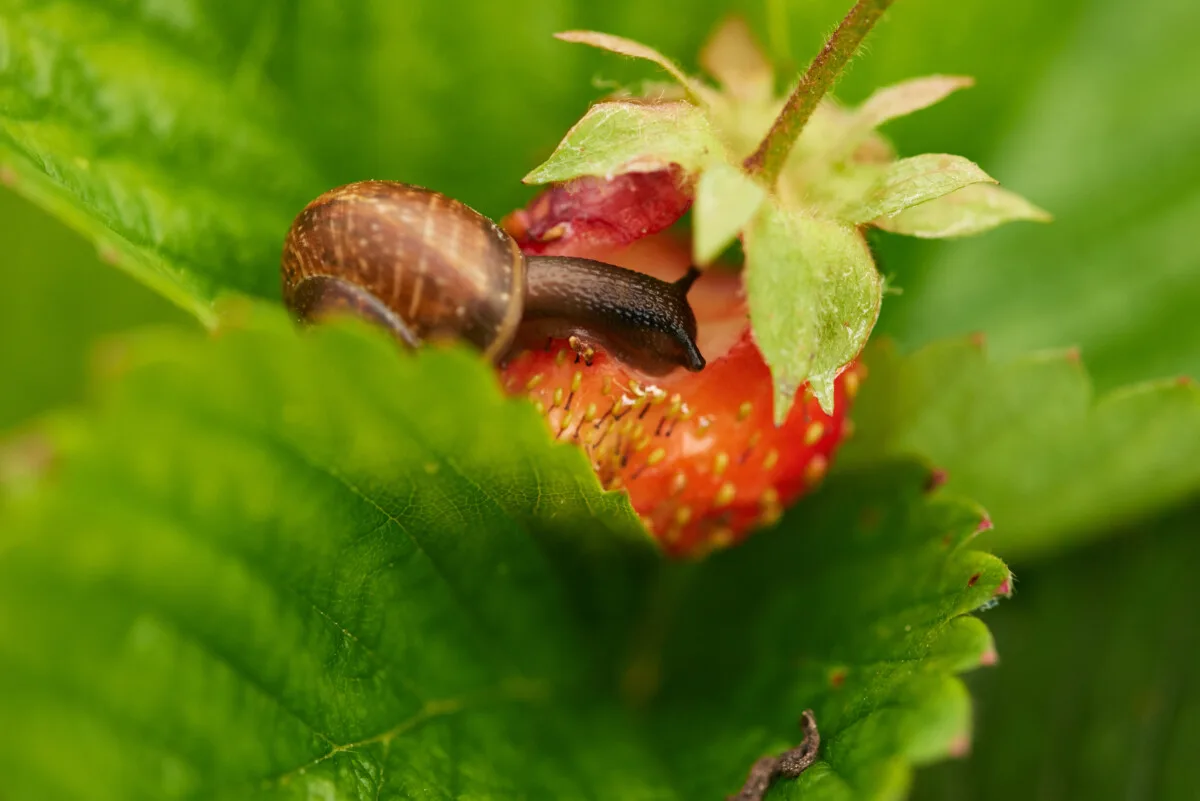
These slimy pests feed on both the leaves and fruits of strawberry plants, leaving behind large holes and a tell-tale silvery trail. Handpick them in the evening, and use organic slug and snail baits sparingly and as directed.
Spider Mites
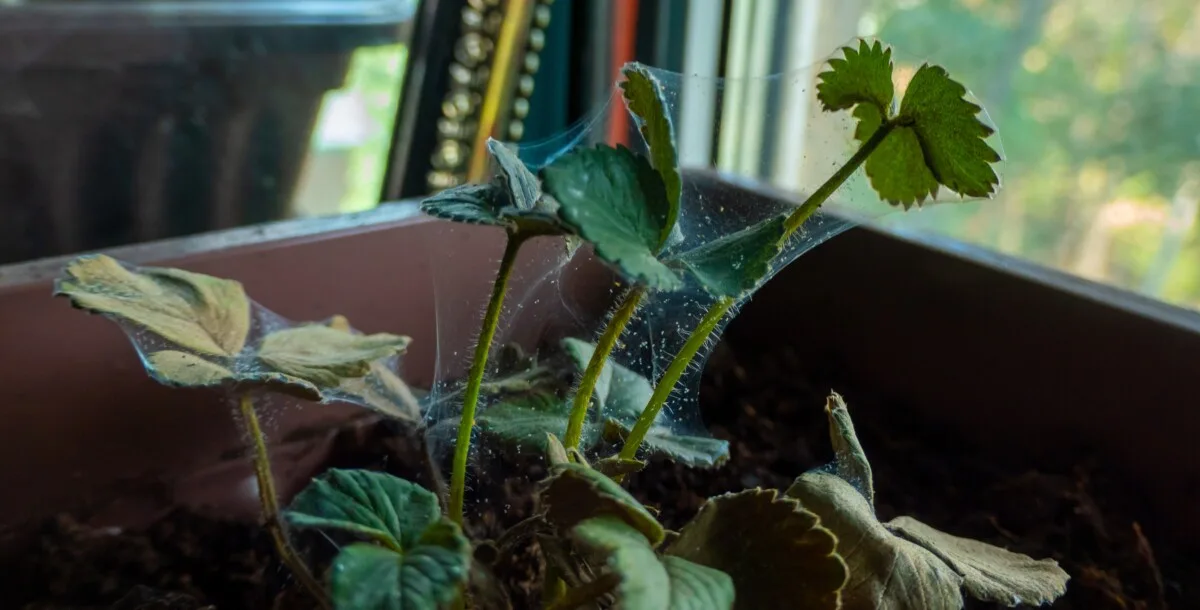
Spider mites are tiny mites that feed on the undersides of strawberry leaves, causing yellow speckling and webbing. Regularly spray plants with a strong jet of water to control spider mites. Again, a healthy predatory insect population in your garden is always a big help.
Strawberry Root Weevils
Root weevils attack the roots of strawberry plants. Shocking, I know; I didn’t see that one coming either. Their feeding on the roots can lead to wilting and poor growth. To control root weevils, you can deploy a microscopic army of beneficial nematodes to the soil, which parasitize and kill the larvae. Removing debris and weeds around the plants also helps to keep root weevils in check.
6. Common Strawberry Diseases
Strawberries are a prime target for disease due to their low-growing habit. Laying down a protective layer of mulch and correct plant spacing will ensure good air circulation between plants which will help.
The best cure is prevention, but a good organic fungicide, such as neem oil or copper-based sprays, can help control the spread of fungal diseases.
It’s important to remove the infected plant parts or the entire plant if necessary to keep the disease from spreading. Don’t put these in your compost bin.
Gray Mold (Botrytis cinerea)
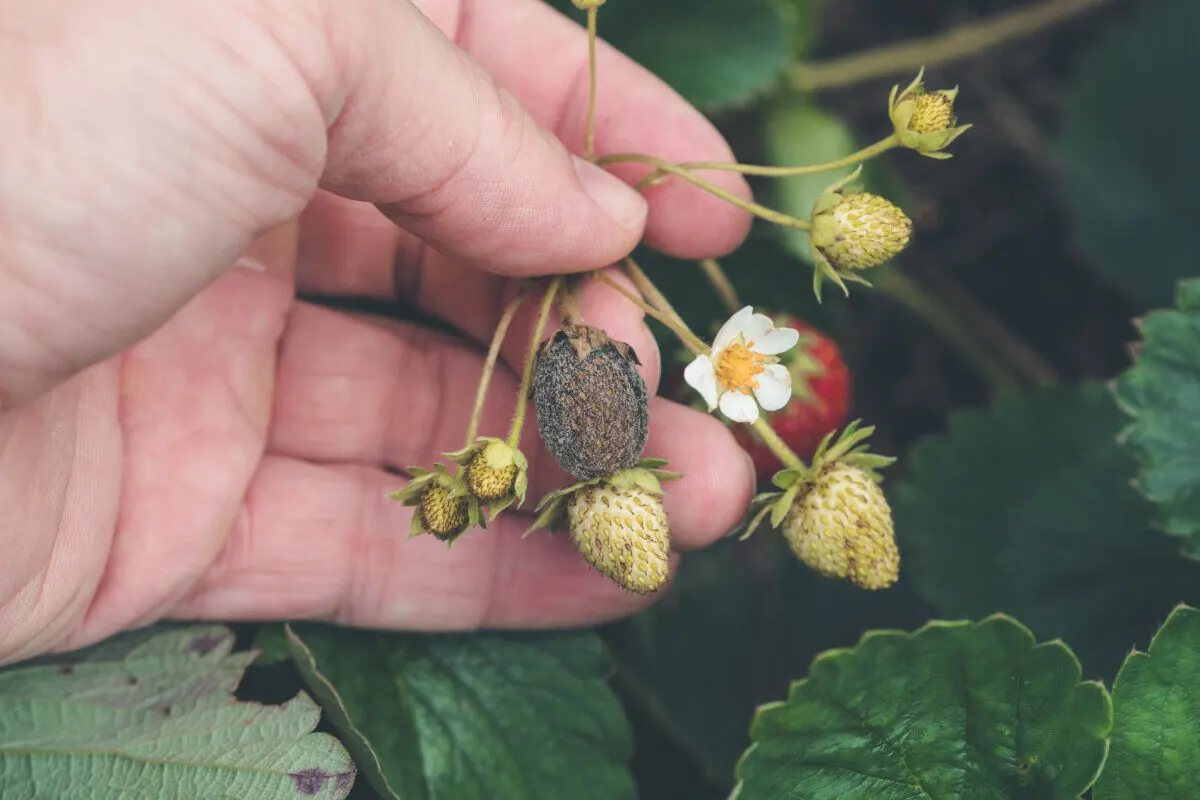
Gray mold is a fungal disease that thrives in humid conditions (don’t they all?) and causes grayish-brown fuzzy mold on strawberries. Very appetizing. Not what you want to see in your berry patch.
To prevent gray mold, ensure good air circulation by providing adequate spacing between plants. You’ll want to remove infected berries and plant debris promptly. Applying fungicides like sulfur or copper-based sprays can also help control the disease.
Powdery Mildew
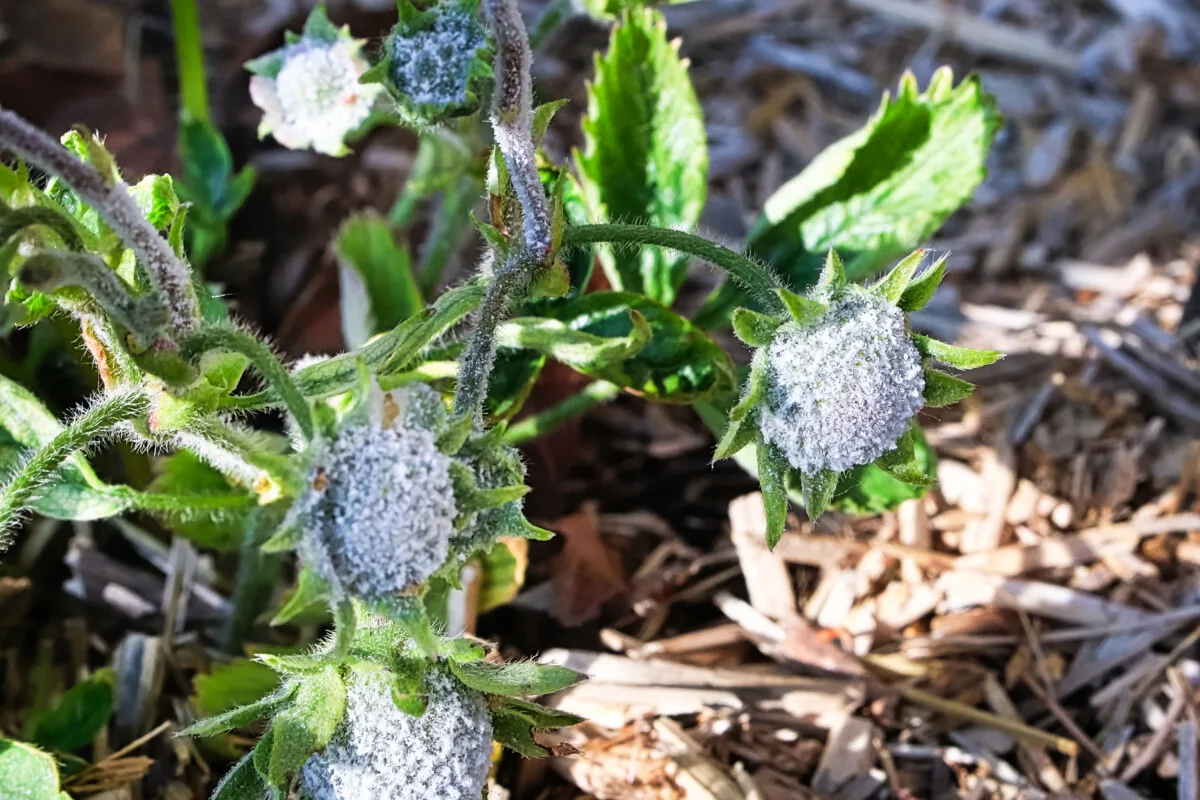
It seems like powdery mildew affects half of the plants in our gardens! Powdery mildew appears as a white, powdery coating on strawberry leaves and stems, and tomatoes, and zucchini, and, and, and.
This stuff thrives in warm and humid conditions, so pay attention to warm, rainy weather and be on the lookout. To combat powdery mildew, ensure proper air circulation and avoid overhead watering. Applying organic fungicides like neem oil or sulfur can help control the disease.
Verticillium Wilt (Verticillium spp.)
This is another fungal disease that can affect numerous garden residents. Verticillium wilt causes yellowing and wilting of strawberry leaves. Infected plants may also have dark streaks on the stems.
Unfortunately, there is no cure for verticillium wilt. If it shows up, the only thing to do is remove and destroy the infected plants. Throw them in the trash or burn them, don’t put them in the compost. Don’t plant strawberries, peppers or cucumbers in that spot next season. Look for verticillium wilt-resistant strawberry varieties for future planting.
Leaf Spot (Mycosphaerella fragariae)
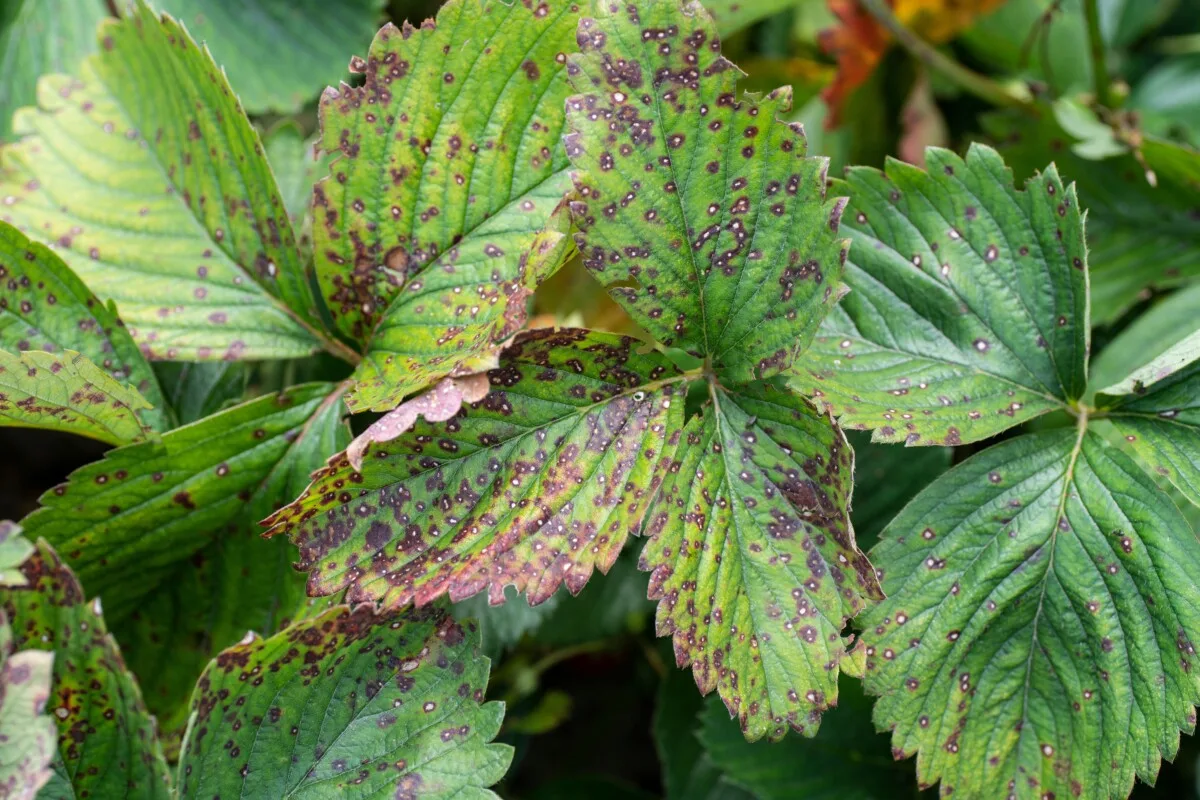
If you start noticing small purple or brown spots that look almost like they’ve burned through the leaf, you’ve got Leaf spot. If left unchecked, the spots get bigger and merge, and the strawberry plant will lose its leaves.
To manage leaf spot, remove infected leaves and debris, ensure good air circulation, and avoid overhead watering. Applying copper-based fungicides can help control the disease.
Root Rot (Phytophthora spp.)
Root rot is another soil-borne disease. It comes from poor drainage and overwatering. However, it can look like strawberries need water because one of the signs is wilted leaves. But this fungus can easily wipe out an entire plant if you add more water to the problem.
Again, prevention is the best cure. To prevent root rot, plant strawberries in well-draining soil and avoid overwatering. Plant strawberries in raised beds or mounds if drainage is an issue in your garden.
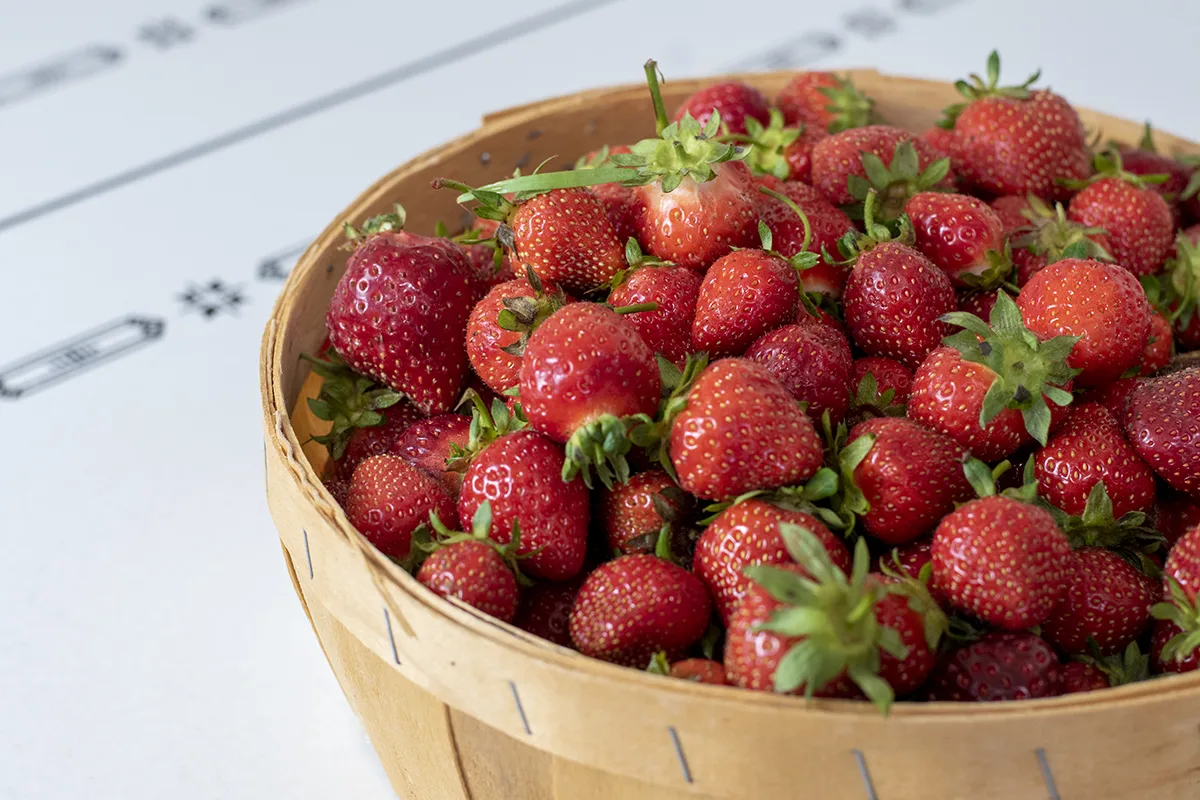
I know it seems like a lot to keep track of. But, as gardeners, we’re pretty good at detecting when something is wrong with our plants. From there, it’s just a hop, skip and a bookmarked page back to this article to diagnose, treat and move on to eating delicious strawberries.

Get the famous Rural Sprout newsletter delivered to your inbox.
Including Sunday musings from our editor, Tracey, as well as “What’s Up Wednesday” our roundup of what’s in season and new article updates and alerts.

